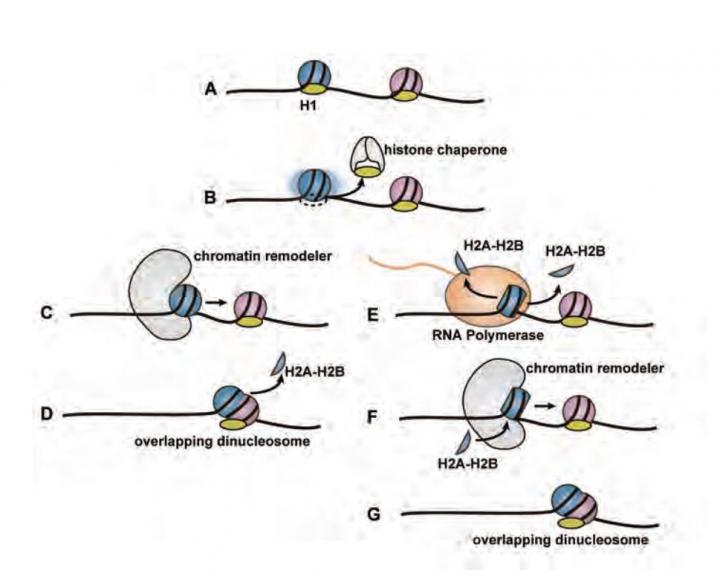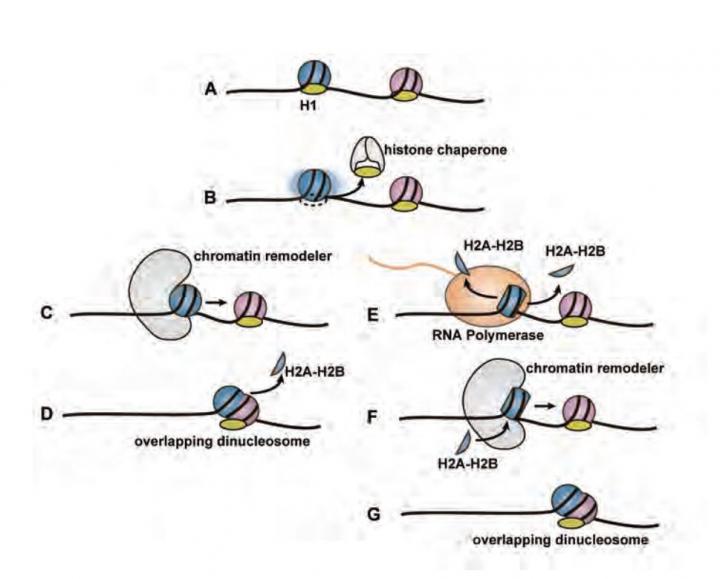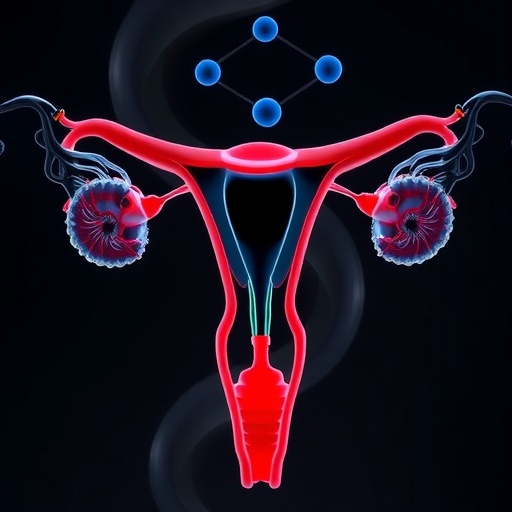
Credit: Waseda University
Tokyo, April 14 – A research group led by Hitoshi Kurumizaka, a professor of structural biology at Waseda University, unveiled the crystal structure of an overlapping dinucleosome, a newly discovered chromatin structural unit. This may explain how nucleosome repositioning occurs and provide valuable information for developing drugs to treat genetic diseases.
This research is published in Science.
Humans develop from a single cell, which divides repeatedly to form organisms. These divided cells all carry the same genetic information and differentiate to form tissues with different functions. When a hand is formed, for example, only the genes needed to form a hand are "switched on," and all the other genes other than those used to form a hand remain switched off. Epigenetics is the field of research that aims to explain this so-called genetic switch, which controls the expression of genes that compose the structure of each organism.
A DNA string stores all of a person's genetic information and measures 2 meters long. This long of DNA must be packed in a nucleus of only about 10 micrometers in diameter. To do so, the DNA is folded neatly into a structure called chromatin. To decipher the genetic information in this condition, the chromatin structure is dynamically modified for reading. This change in chromatin structure regulates the differences in genes being read and differentiate phenotypic variations of cells.
A chromatin is composed of four histone proteins with DNA wrapped around a chain of spools known as nucleosomes. When reading genetic information, a chromatin structure is modified, so that the DNA packed into the chromatin becomes easier to read by repositioning the nucleosome near the point where the reading starts. Then, an RNA polymerase, an enzyme that transcribes the genes, starts reading the DNA from where the nucleosome was moved. This phenomenon of repositioning is called nucleosome remodeling. It was hypothesized that in nucleosome remodeling, nucleosomes collide and form a chromatin structural unit known as an overlapping dinucleosome (Figure 01). The formation of an overlapping dinucleosome through nucleosome remodeling was thought to be crucial for regulating the genetic switch, but its existence and actual structure were elusive.
Professor Kurumizaka's research group determined the three-dimensional structure of an overlapping dinucleosome at atomic resolution.
"Our team developed a method to reconstitute overlapping dinucleosomes in vitro and to prepare them in large quantities with high purity. We succeeded in crystallizing the purified overlapping dinucleosomes (Figure 02), and using these, we conducted x-ray diffraction experiments at SPring-8, a large-scale synchrotron radiation facility."
These discoveries are promising for expanding research on the link between the overlapping dinucleosome and the genetic switch.
Moreover, mutations in nucleosome remodeling proteins have been found in various cancers, including ovarian and bladder cancers. This suggests that an incomplete formation of overlapping dinucleosome may trigger abnormalities in the genetic switch, turning normal cells into tumor cells. Accordingly, understanding the atomic structure of the overlapping dinucleosome may provide valuable information for understanding how the abnormal dynamics of chromatin are related to cancer, offering essential information for development in cancer drugs.
Professor Kurumizaka is intrigued to study the correlation between the overlapping dinucleosome formation and the genomic DNA functions in cells in the future.
###
Article title: Crystal structure of the overlapping dinucleosome composed of hexasome and octasome
* This was a collaborative study led by Professor Hitoshi Kurumizaka of Waseda University, in collaboration with researchers from Hiroshima University, Yokohama City University, Kyushu University, the National Institutes for Quantum and Radiological Science and Technology, and Kyoto University.
About Waseda University
Waseda University is a leading private, non-profit institution of higher education based in central Tokyo, with over 50,000 students in 13 undergraduate and 21 graduate schools. Founded in 1882, Waseda cherishes three guiding principles: academic independence, practical innovation and the education of enlightened citizens. Established to mold future leaders, Waseda continues to fulfill this mission, counting among its alumni seven prime ministers and countless other politicians, business leaders, journalists, diplomats, scholars, scientists, actors, writers, athletes and artists.
Waseda is number one in Japan in international activities, including number of incoming and outgoing study abroad students, with the broadest range of degree programs taught fully in English, and exchange partnerships with over 600 top institutions in 84 countries.
Media Contact
Lisa Bobroskie
[email protected]
@waseda_univ
############
Story Source: Materials provided by Scienmag





